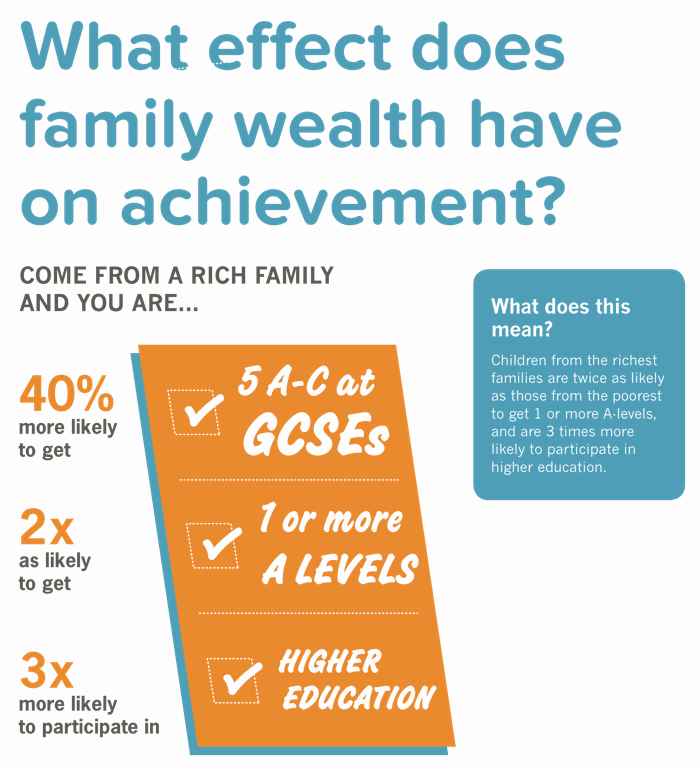Briefing • 14 February 2014
Briefing 18: What effect does family wealth have on achievement?

Download the full pdf here
Explaining the data
This information comes from a 2013 study by Blanden and Macmillan (2013). A-level data came from the Longitudinal Survey of Young People in England (LSYPE). The comparison was between children from the most and least deprived fifths of the population based on family income at age 14. Higher education participation data came from a 2012 study by Crawford, linking data from the National Pupil Database and the Higher Education Standards Authority. The comparison was between children from the most and least deprived fifths of the population based on their Free School Meal status and neighbourhood deprivation.
Tagged under: education, life chances, social mobility, wealth inequality
Don’t miss out – subscribe to our FREE weekly briefing.
Recent briefings
- Briefing 65: Privately educated children earn more than state-educated children with the same grades
- Briefing 64: There are more disadvantaged children in Britain than in many other advanced economies
- Briefing 63: Reducing inequality doesn’t harm the economy
- Briefing 62: Rising inequality has reduced the UK’s economic growth
- Briefing 61: Regional inequality in the UK is the worst in Western Europe




